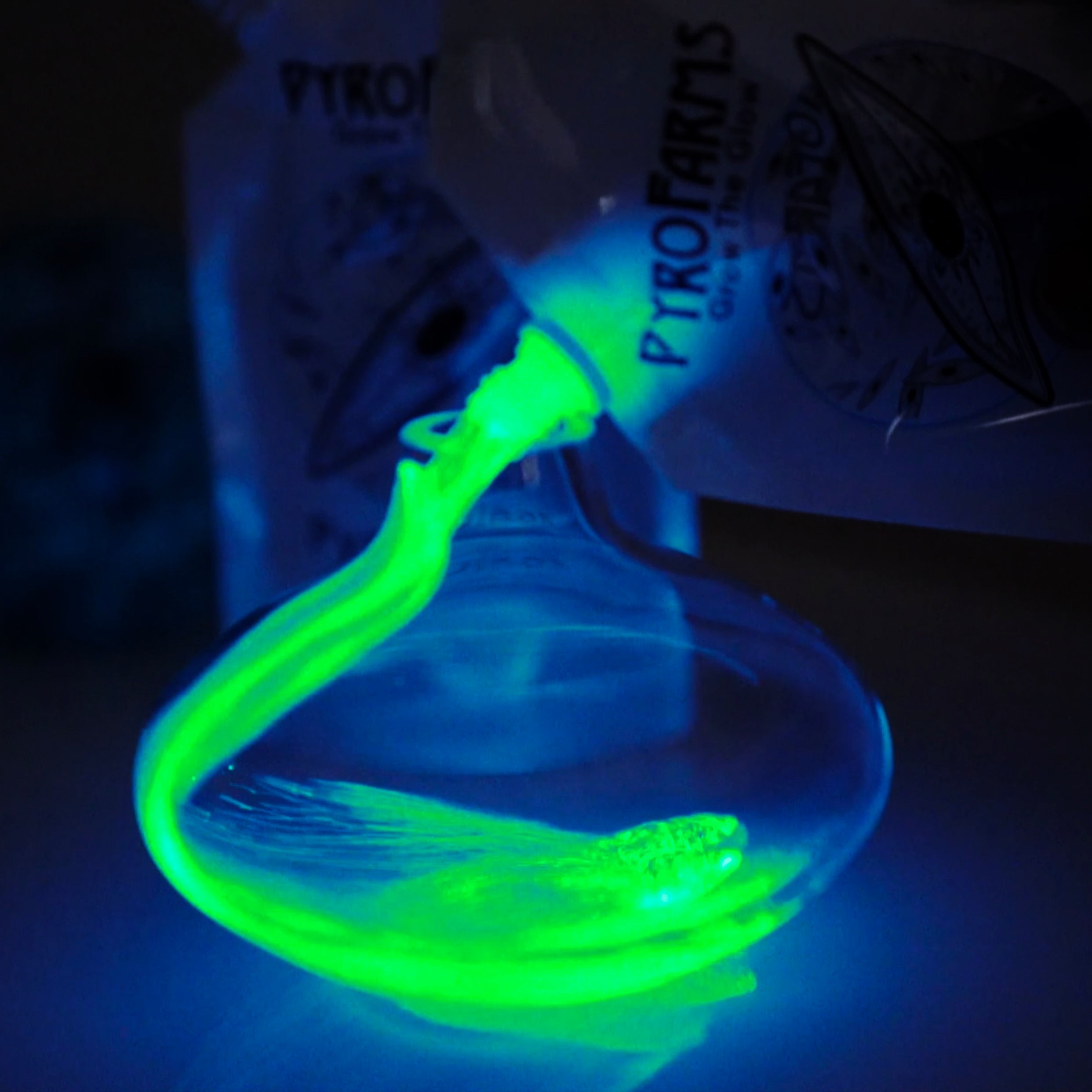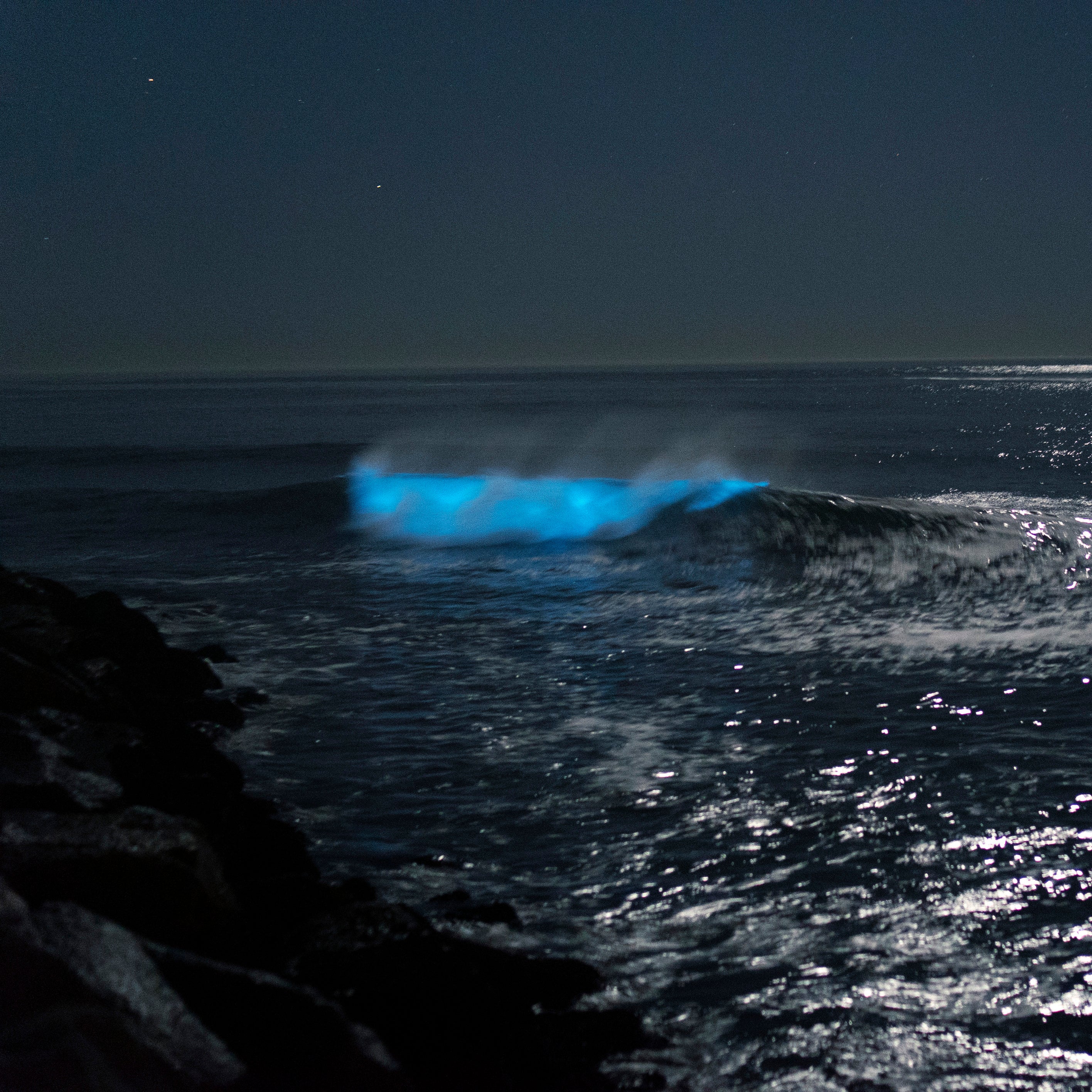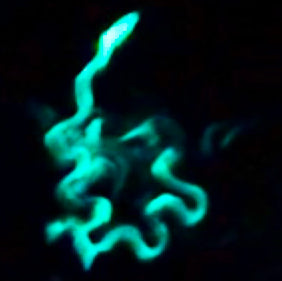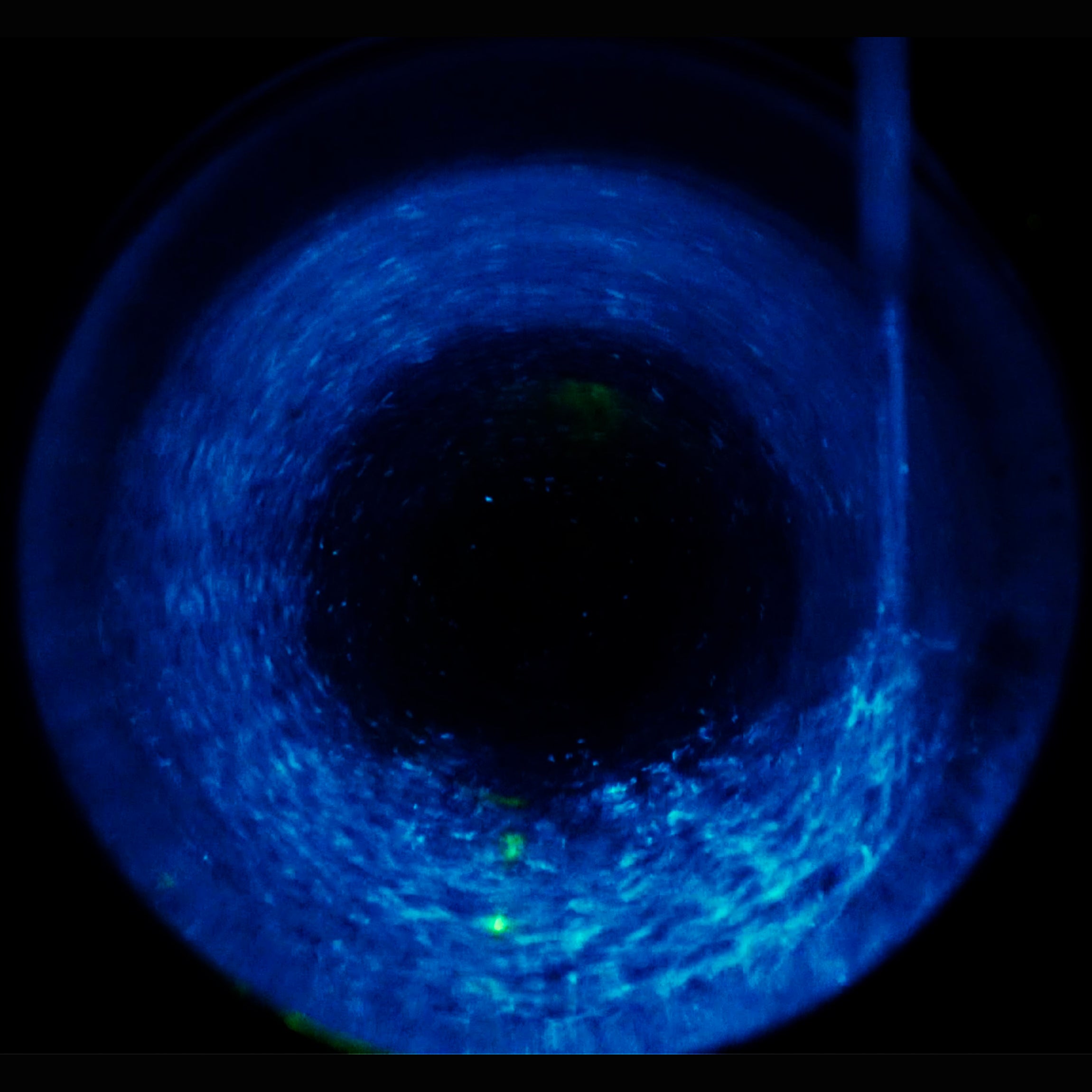50,000 Dinos in a Vase (PyroDinos)

PyroDinos are a marine dinoflagellate named Pyrocystis fusiformis. They are plant-like plankton or phytoplankton. PyroDinos are phototrophic (use sunlight as their main energy source) and can also be classified as single-cell microalgae or simply ‘algae’. Our PyroDinos are grown under LED lights and filtered sunlight on our Algae Farm in San Diego California.
One PyroDino cell was isolated off the coast of San Diego in 2009 and from this single cell, all our PyroDinos have been grown. PyroDinos can be added to a saltwater aquarium or a reef system. They are non-toxic phytoplankton and will be snacks for most aquarium inhabitants. They may also be removed by mechanical filtration.
Growing PyroDino dinoflagellates is a lot like taking care of a houseplant. After all, dinoflagellates cells are classified as plant-like cells. Dinoflagellates can be grown in most any clean clear container, with an emphasis on Clean. CONTAINERS Most household water bottles, glass jars (mason), flasks and some vases can be used.
Here are the simple requirements:
1) The container is clean and free from soap, detergents and contaminates.
2) The container has a lid or some loose cover that prevents contamination and significant evaporation.
3) The container is clear and allows a good amount of light to penetrate the container.
Low and wide containers like the one in this video work better than narrow and tall containers. A large surface to volume ratio is preferred by PyroDinos.
A container like a Flask is ideal, wide surface area and narrow opening Cleaning: To clean a container use a small amount of household dish soap and rinse thoroughly. Bleach can be diluted to 1/50 solution with tap water for effective decontamination. A wash with dish soap followed by filling the container with a diluted bleach solution is optimal. Again- rinse thoroughly. Do not use full strength bleach. Rinsing the container with a small amount of DinoNutrients is recommended before pouring your dino culture into the container.
For containers made entirely of glass, an oven can be used to sterilize the container. About 30 minutes at 400F should get the job done. A water bottle that has been poured out (into a glass or other container) should be clean enough to start a new dino culture. As long as no one has directly drank out of the container. Again – best to rinse the bottle with a small amount of DinoNutrients before populating.
Cover: A lid or cover that allows some air-exchange but protects from dust and debris should work fine. Sealed containers will work as long as the container is opened once every week or two weeks for air exchange.
Clear: Most bottles and jars that are not heavily tinted should be adequate for growing PyroDinos. Clean clear plastic bags (like freezer bags) can be also be used. LIGHTING Place your PyroDino container in a location you would keep a leafy houseplant. Filtered sunlight or indirect sunlight is perfect. In areas with low sunlight (wintertime, extended cloudiness) supplemental room lighting is recommended.
For advanced care and culturing LED light strips or bulbs can be used with a light timer (outlet timer). These can be typical broad white spectrum LEDs or the ‘grow light’ kind. Either will work fine. Fluorescent and even some incandescent lights will work as well. Make sure the light does not add any heat to the PyroDino culture container. If the container is heated significantly by the light then move the light away from the container until the heat transfer is minimal. Note – some direct sunlight in the early morning hours or late evening is fine as long as the light does not add heat to the container.
PyroDinos have a circadian clock that helps them discern daytime from nighttime. PyroDinos collect light energy during their ‘day cycle’ and produce bioluminescence during their ‘night cycle’. PyroDinos will not produce light (bioluminescence) during their daytime cycle. Steady changes to their light conditions will change their day and night cycles. They can sustain day cycles up to 20 hours (of light) and should never have less than 8 hours of light in their day cycle.
Changing their day and night cycle (circadian clock) is easy. You will need a LED light, a light/outlet timer and a location that is relatively dark during daytime hours. Program the light timer to provide light during nighttime hours (from 10 to 14 hours of light) and keep the PyroDinos in darkness during the day. You should see changes to their circadian clock (day and night cycles) after a couple of days. After a week the change in their cycle should be complete.



Comments